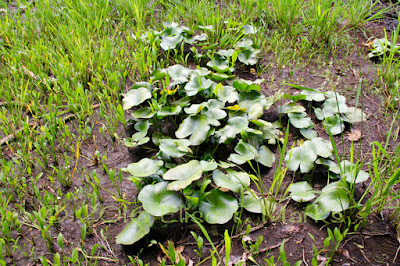Here are some of the Cowls I've created.
Some are sold and some are still available.
Purple And Heather Gray Cowl
Purple Scarf, Crocheted Cowl/Scarf, Neckwarmer
This chunky hand crocheted Purple and heather gray cowl, scarf, is made of soft thick, acrylic yarn, with a Spalted Maple Decorative button, for warmth and style. My crocheted cowls have an open weave pattern, which I love the look of. If you are looking for a cowl that is even warmer, check out my knitted cowls. Just slip one on over your head, for a warm cozy feeling without the bulk of a long scarf. Handmade in Vermont, by me (Elise). $35.
Purple and Teal Cowl, Scarf, Neckwarmer, with Spalted Maple Button
This hand crocheted cowl, scarf, is made of thick, soft, acrylic and wool yarn, with a Decorative wood button, for warmth and style. Just slip this on over your head, for a warm cozy feeling without the bulk of a long scarf. Handmade in Vermont, by me (Elise). $40.
Purple Heather Cowl With Fringe
Purple Cowl with Fringe, Purple Scarf, Knitted Cowl/Scarf, Neckwarmer
This chunky hand knitted Purple and heather gray cowl, scarf, is made of soft thick, acrylic yarn, with a Spalted Maple Decorative button, and fringe, for warmth and style. Just slip This on over your head, for a warm cozy feeling without the bulk of a long scarf. Handmade in Vermont, by me (Elise). $45.
Teal and Purple Cowl
Scarf, Neckwarmer, with Spalted Maple Button
This hand crocheted cowl, scarf, is made of thick, soft, acrylic yarn, with a Decorative wood button, for warmth and style. Just slip this on over your head, for a warm cozy feeling without the bulk of a long scarf. Handmade in Vermont, by me (Elise). $35.
Sapphire Blue Cowl
Blue Scarf, Knitted Cowl/Scarf, Neckwarmer
This hand knitted cowl, scarf, is made of really soft, Lion Brand Homespun acrylic yarn, with a Decorative spalted maple wood button, for warmth and style. Just slip this on over your head, for a warm cozy feeling without the bulk of a long scarf. Handmade in Vermont, by me (Elise). $40.
Purple And Teal Cowl
The picture below is the same cowl, but showing the beads. It can be worn either way.
Purple and Teal Cowl
Scarf, Neckwarmer, with Tassel, Beads, and Spalted Maple Button
This hand knitted cowl, scarf, is made of thick, soft, 75% acrylic and 25% wool yarn, with a Decorative spalted maple wood button, and a tassel embellished with (blue, green, black, horn, and antiqued silver) beads, for warmth and style. Just slip this on over your head, for a warm cozy feeling without the bulk of a long scarf. Handmade in Vermont, by me (Elise). $50.
with button. sold
Autumn Colors Cowl
Scarf, Crocheted Cowl/Scarf, Neckwarmer
This hand crocheted chunky cowl, scarf, is made of thick, soft, Lion Brand Landscapes Mountain Range, acrylic yarn, for warmth and style. Just slip this on over your head, for a warm cozy feeling without the bulk of a long scarf. Handmade in Vermont, by me (Elise).
For proper care, Wash by hand and lay flat to dry to protect the shape and lifespan of your cowl. Avoid harsh cleaners. Do Not machine wash.
Please note that this is a handmade item, so it is normal and expected to notice some slight variation in the color of the yarn. This adds charm and character to your handmade item.
$50. Gray & White Cowl
Scarf, Neckwarmer
This hand crocheted, cowl, scarf, is made of, soft, 60% cotton and 40% acrylic, medium weight yarn, with a Decorative pattern that I designed. Just slip this on over your head, for a warm cozy feeling without the bulk of a long scarf. Handmade in Vermont, by me (Elise). $45.
This is made for a human, but I got a doggie friend to model it for me. Just for the fun of it. Thank you Bandit for being such a good model.
Gray Cowl
Scarf, Neckwarmer, with Spalted Maple Button
This hand crocheted, ribbed, cowl, scarf, is made of thick, soft, 90% acrylic and 10% alpaca yarn, with a Decorative spalted maple wood button. Just slip this on over your head, for a warm cozy feeling without the bulk of a long scarf. Handmade in Vermont, by me (Elise). $45.
This is made for a human, but I got a doggie friend to model it for me. Just for the fun of it. Thank you Bandit for being such a good model.
Purple Cowl
Cowl, Scarf, Knitted Cowl/Scarf, Neckwarmer
This hand knitted cowl, scarf, is made of really soft, Lion Brand Homespun acrylic yarn, with a Decorative spalted maple wood button, for warmth and style. Just slip this on over your head, for a warm cozy feeling without the bulk of a long scarf. Handmade in Vermont, by me (Elise). $40. SOLD
Green Cowl with Ferns and Red Cedar Button
This hand knitted cowl, scarf, is made of soft, acrylic yarn, with a red cedar Decorative button, and crocheted ferns, for warmth and style. Just slip this on over your head, for a warm cozy feeling without the bulk of a long scarf. Handmade in Vermont, by me (Elise). $50. SOLD
Teal and Blue Cowl
Teal and Blue Cowl/Scarf, Neckwarmer, with Spalted Maple Button
This hand crocheted cowl, scarf, is made of thick, soft, 75% acrylic and 25% wool yarn, with a Decorative spalted maple wood button. Just slip this on over your head, for a warm cozy feeling without the bulk of a long scarf. Handmade in Vermont, by me (Elise). $40. SOLD
Please note that these are handmade, so it is normal and expected to notice some slight variation in the color of the yarn. This adds charm and character to your handmade item.
Created in a smoke-free and scent free environment.
These one of a kind buttons are made of forest salvaged, Vermont wood, by Jedd, of Kettler Woodwork.
This is currently set up as a gallery of my creations and is not set up to take payments. If you are interested in purchasing any of my creations, please contact me by email: elise_create@yahoo.com
or by phone: 802-951-5933
between 10am and 6pm, Monday thru Saturday.
You can see more of my creations at:
https://elisecreate.wixsite.com/mysite

















































